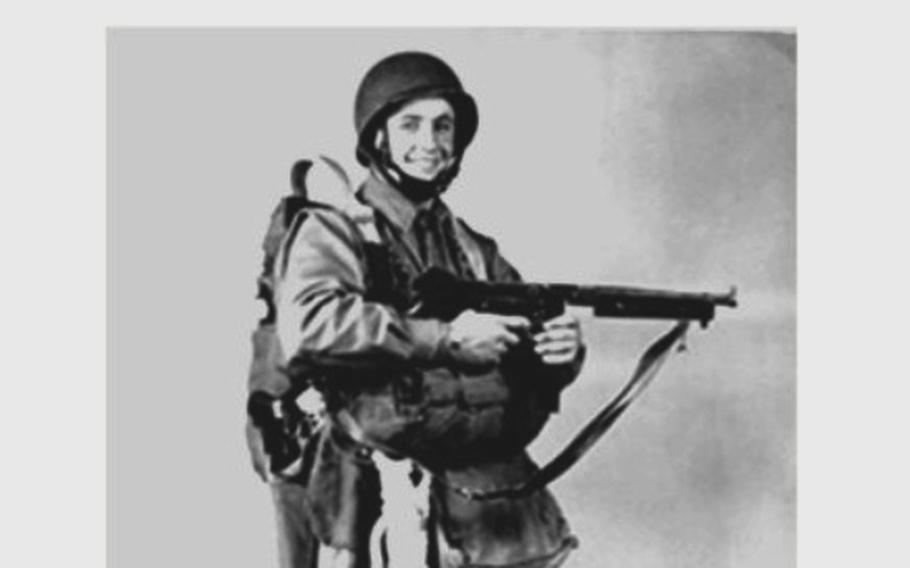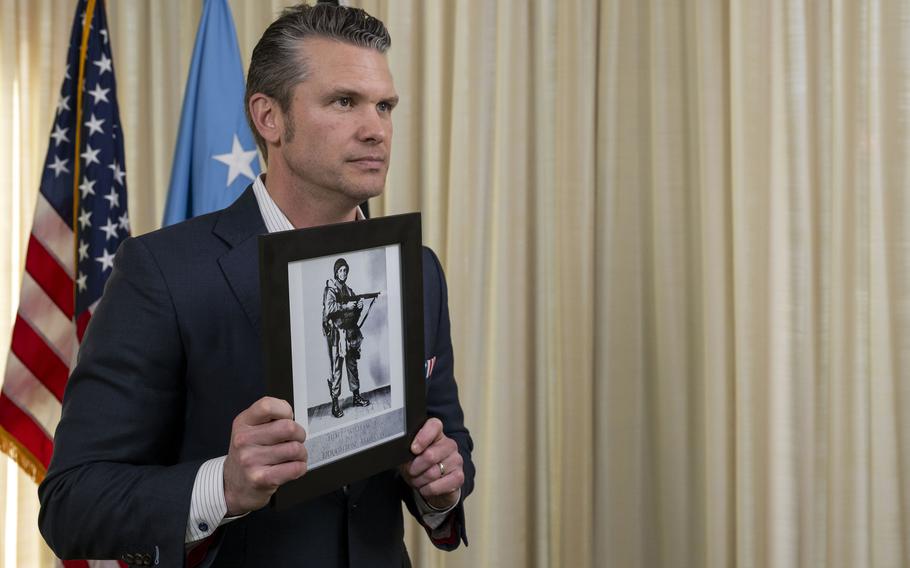
An undated photo of Army 1st Lt. William Hott. (Defense POW/MIA Accounting Agency)
An American soldier killed during the Korean War has become the 100th service member identified from remains turned over by North Korea seven years ago, the Defense Department announced Wednesday.
Army 1st Lt. William Hott, a native of Cuyahoga County, Ohio, served in the 32nd Infantry Regiment, 7th Infantry Division, Defense Secretary Pete Hegseth said in a statement.
Hott was killed in action on Dec. 1, 1950, at the East Chosin Reservoir, about 150 miles north of the border dividing the Korean Peninsula and 70 miles south of North Korea’s border with China, the statement said.
Fierce fighting erupted at the Chosin Reservoir — known in South Korea as the Changjin Reservoir — between November and December 1950, five months after North Korean troops invaded the South and sparked the three-year war.
Approximately 30,000 U.N. Command forces in the area faced 120,000 Chinese troops deployed to halt the U.S.-led advance. Outnumbered and surrounded, allied forces retreated south through mountainous terrain under relentless attacks from Chinese reinforcements.
Maj. Gen. Oliver Smith, commander of the 1st Marine Division, voiced concerns about the difficult conditions in a letter to the Marine Corps commandant on Nov. 15, 1950.
“I believe a winter campaign in the mountains of North Korea is too much to ask of the American soldier or Marine, and I doubt the feasibility of supplying troops in this area during the winter or providing for the evacuation of sick and wounded,” Smith wrote, according to the Marine Corps’ website.

Secretary of Defense Pete Hegseth speaks about a recently identified Korean War soldier at Joint Base Pearl Harbor-Hickam, Hawaii, March 25, 2025. (Madelyn Keech/U.S. Air Force)
The battle left approximately 7,000 U.S., South Korean and British troops dead. An estimated 50,000 Chinese soldiers were also killed, according to the National Museum of the Marine Corps.
Hott’s remains were among those returned to the U.S. on July 27, 2018, when relations between President Donald Trump and North Korean leader Kim Jong Un had improved.
During their summit in Singapore that year, the two leaders agreed to “commit to recovering POW/MIA remains, including the immediate repatriation of those already identified,” according to a joint statement issued June 12, 2018.
“Thank you to Chairman [Kim] for keeping your word and starting the process of sending home the remains of our great and beloved missing fallen,” Trump wrote on Twitter on Aug. 2, 2018.
North Korea handed over 55 boxes containing 501 bones as part of that pledge. Forensic analysts at the Defense POW/MIA Accounting Agency later estimated the remains belonged to at least 250 individuals, according to the Defense Department.
Each identification is “progress toward our goal of leaving no warriors behind,” DPAA director of scientific analysis John Byrd said in Wednesday’s statement.
More than 7,400 U.S. service members who fought in the Korean War remain unaccounted for, according to the DPAA. Of those, the remains of about 5,300 are believed to be in North Korea.